MEDIEVAL IN-VISIONS
(The Past of Hungate)
Medieval In-Visions responds to the medieval materiality preserved by St Peter Hungate, and the medieval culture, local (East Anglia and St Julian of Norwich) and continental with light-space interventions that fulfil the medieval role of intercessions.
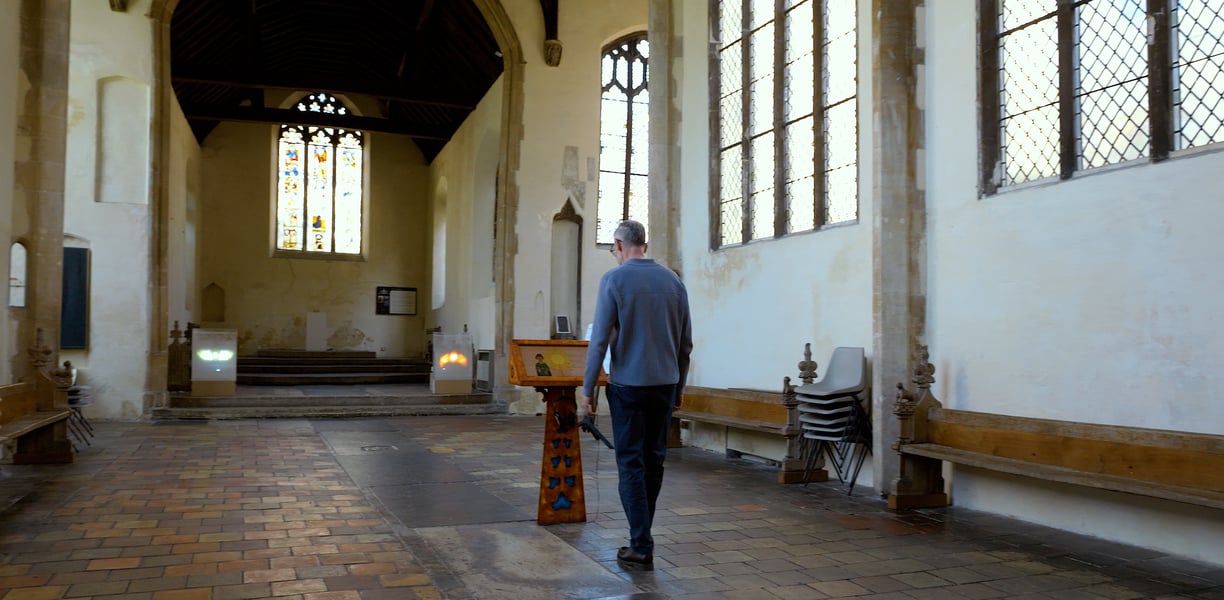

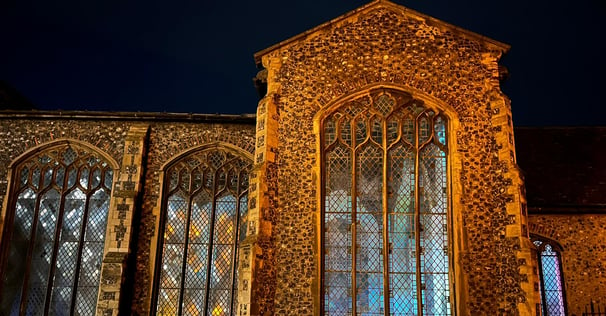

The Numinous - Marian Saunders
This live performance transfigures the architectural setting of St Peter Hungate into an everchanging light-form and colour-sound matter-flow.
The abstracted visuals, stimulated by the Hungate’s medieval context and mix-curated by Marian Saunders, will be flown by hand-held reflective surfaces, ‘lumia’ by Cate Jones and Suzie Hannah as supplementary means to augment the becoming-chorus of light-space-sound.
The waves of matter vibrations, flows of air, the kaleidoscopic multiplicity and the segmenting colours become a diaphanous container for the imperceptible, almost veiled, medieval matter.
The audience will not only experience the architectural space as a live artwork but also a lived past that is related in a new light.
The Numinous is facilitated by Philip Archer’s music, a materialisation of the first ten pieces of 50 alchemical discourses, each with its own illustration, verse, and musical notation published in 1617 under the title Atalanta Fugiens.
The new compositions were initially played through Yamaha Portasound keyboards on circuits modified so that the incoming musical material was transformed as it passed through. Each piece was then augmented with layers of harmonium, guitar and banjolele. The music that emerges is new and transmuted while staying true to the spirit and themes of the original work.
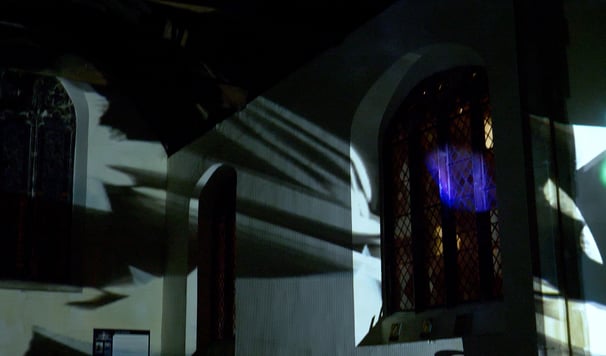

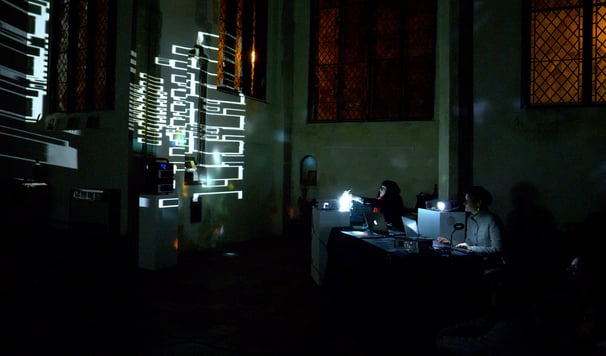

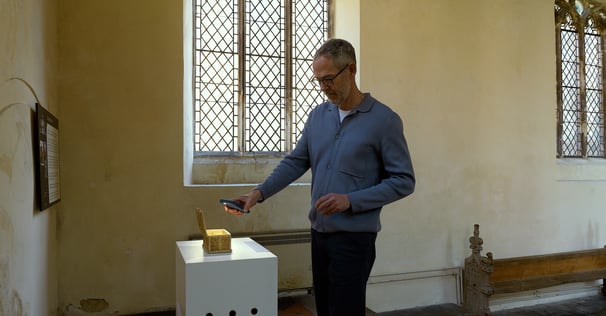

O Blessed Tongue - Dr Phil Archer
Phil works with the title of the projects Invertlight to “trans-vert” the light condition of the church into sound. The piece is a modern reworking of a medieval reliquary, a container for holy relics which would be venerated by the faithful.
Instead of housing the preserved body part of a saint or a piece of the holy cross, the box contains electronic circuitry that detects the intensity of the light in the space. This data is processed by software and used to generate an ever-changing musical soundscape created by the shifting patterns of light and shadow that fall onto the sensors when the box is opened.
As a poetic object, the piece draws connections between the light entering the church through the large windows, the rituals and traditions associated with the history of the space, and our relationships with particularly meaningful objects.
It provides a playful, interactive experience for visitors, and provokes thought and consideration about the space, its history, and notions around faith – whether religious faith or faith in technology.
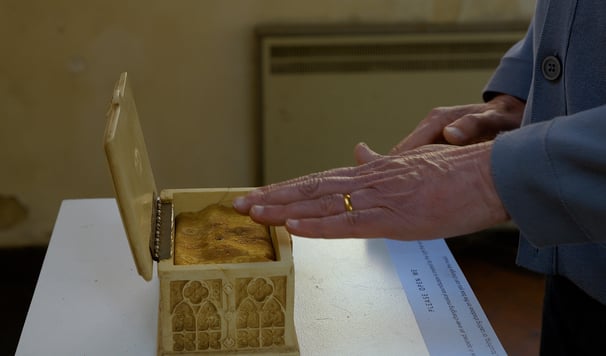

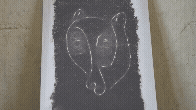

The Lamb of The Apocalypse - Dr Phil Archer
This intervention draws inspiration from a medieval mural in the Romanesque church of Sant Climent de Taüll, Catalonia, Spain, which shows a manifestation of God found in the Book of Revelation 5:6. In the enigmatic verses of Revelation, a lamb is described as having seven eyes and seven horns representing the seven spirits of God sent out into the world.
The piece uses thermochromic pigment and homemade electronics to create a modern rendering of the lamb based on its early 12th-century depiction of the Catalan mural. Starting from nothing, the face gradually reveals itself on the canvas as if painted by an invisible hand before fading away to blackness again. This cycle repeats endlessly, with the lamb being alternately revealed and concealed.
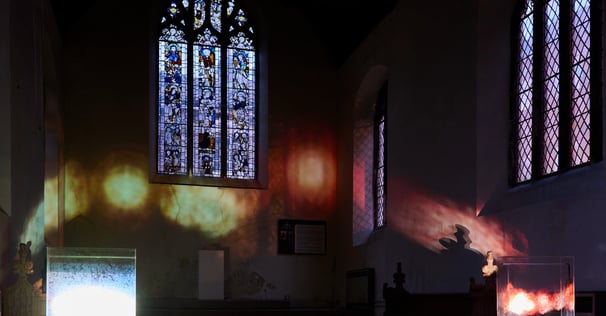

Angel Volatility - Dr Roter Su & Cat Jones
This intervention embraces the volatile matter of incense offering to respond to St Peter Hungate’s stained glass angels and angel roofs of East Anglia.
Inspired by the verses of Revelation 8:4, the intervention re-images and re-defines the presence of angels through smoke micro-particles in transparent “vases” (containers). Smoke, as fluid, fluent, and fluctuating matter, stands in for incense to actualise the medieval intercessory prayers. By inverting the matter-flow of smoke, from top to bottom, Angel Volatility invites the audience to visualise the tangibly intangible through the colourful velocity of light.
Cat Jones’s angels as matter-flow are created by using cymatics -the physical process of visualising sound through liquid, thus creating matter and life through sound frequency and water- to connect to fluctuations of states between transcendent frequencies and simultaneously emulating the volatility of smoke within vases.
The energy changes from one physical state to another, representing here the mutability and transformation of the angel’s forms. The applied luminous velocity redefines what angels, and their ultimate volatility, mean to us.
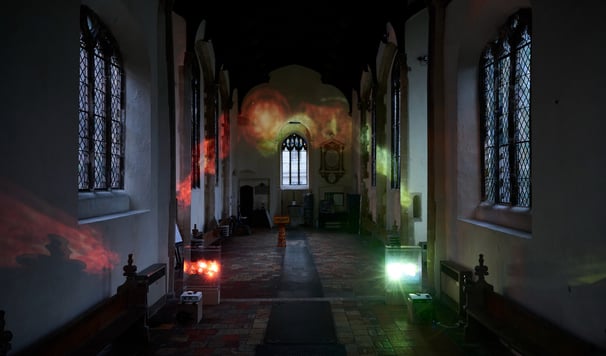

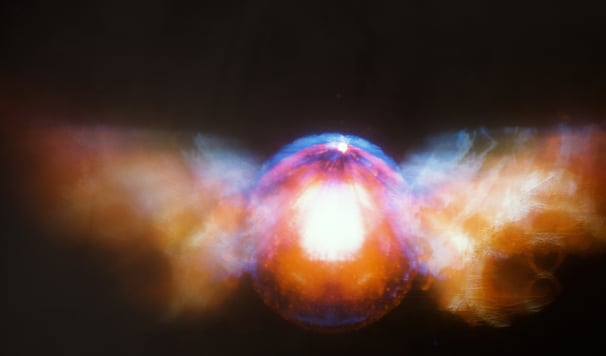

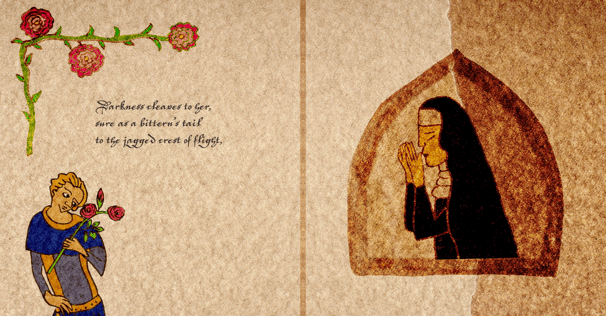

Darkness - Emerita Professor Suzie Hanna
Suzie's animation Darkness works with Ben Morgan’s contemporary poem, full of moments of light and darkness, physical and emotional, that portrays an imagined visit to the anchoress, Julian of Norwich (1343 - after 1416), by her son.
As an Anchorite, Julian spent her later life, after the age of 50, in a cell adjoining a church from which she took her name. She wrote Revelations of Divine Love, the earliest surviving book by a woman in the English language. It is not known whether Julian of Norwich had any children before entering her ‘living death’.
However, Ben Morgan’s poem is narrated by her adult son, stressing the fact that women could become anchorites after having a family life. While St Peter Hungate is post-Julian (mid-15th century), the church was associated with the lay women in the Beguinage next door.
The animation Darkness references the history of religious women in Norwich. The lectern as the container for the animation allowed for the rethinking of the traditional medieval eagle design, taking inspiration from the mediaeval city and its holy women.
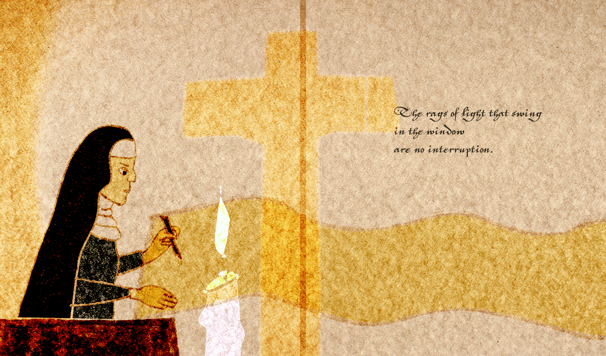

INVERTLIGHT
Light-space interventions in heritage settings
Contact
© 2025. All rights reserved.